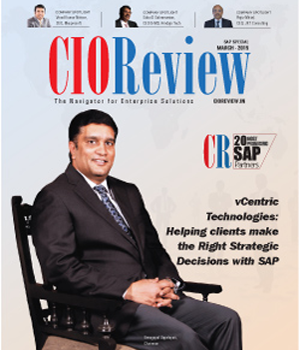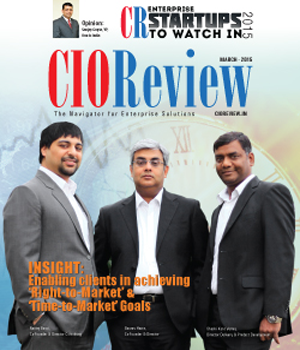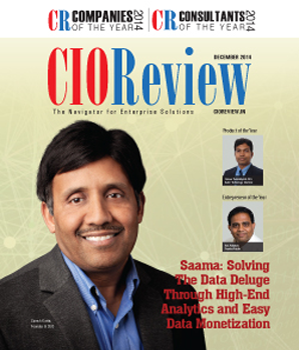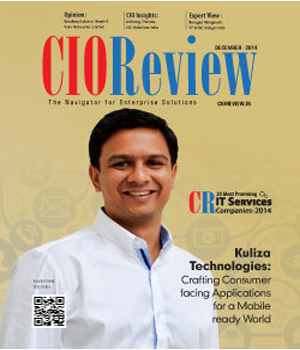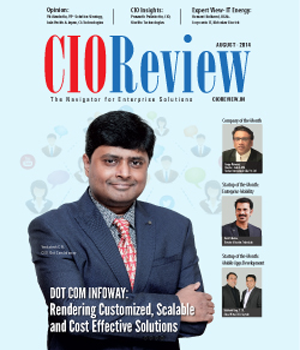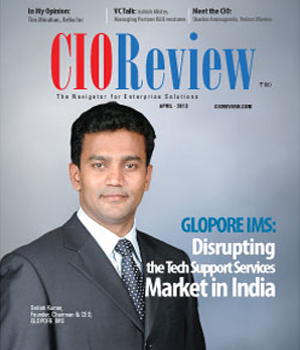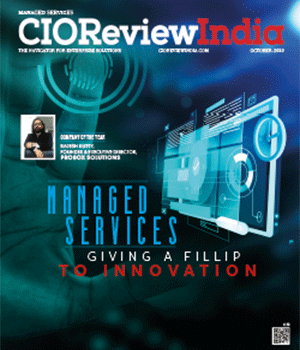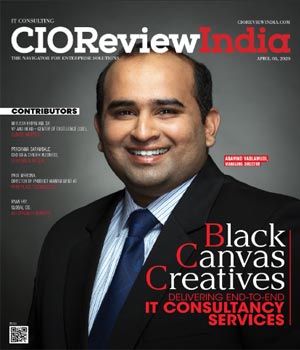
VMware 2015 State of Business Mobility Report Finds Mobility Investments Drive Infrastructure, App and Process Changes
CIOReview Team | Friday, 13 November 2015, 07:15 IST
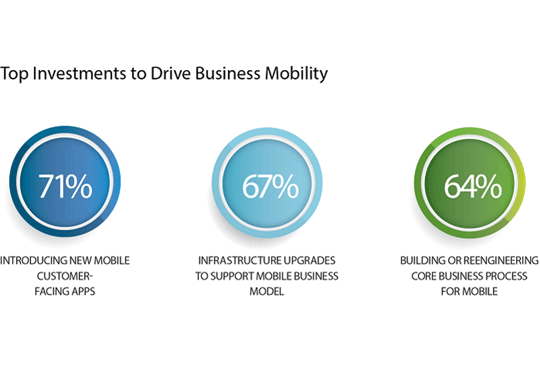 Increased security is the top priority for businesses to adopt business mobility
Increased security is the top priority for businesses to adopt business mobility
• Nearly two-thirds of surveyed organizations have or are actively re-engineering core business processes for mobile in the next 12 months
• On average, companies embracing business mobility said they are seeing a 150 percent return on investment
BANGALORE, INDIA – Nov. 13, 2015 –VMware, Inc. (NYSE: VMW) today released the VMware 2015 State of Business Mobility Report, a global survey of business decision makers and IT practitioners that examines the worldwide progress in transitioning from the client-server era to the mobile-cloud era. The report concluded that companies are beginning the business mobility transformation, shifting at least one core business process to the mobile paradigm. To support this shift, the organizations surveyed said they are upgrading infrastructure, introducing customer-facing mobile apps and reprocessing mission-critical applications for mobile employees.
• Download the VMware 2015 State of Business Mobility Report
• View the interactive VMware 2015 State of Business Mobility report
• Read more about the VMware2015 State of Business Mobility report on Radius
Mobility and the shift to the mobile-cloud era are among the most transformational trends in business today. With the potential to affect many employees, customers and business interactions, mobility can empower organizations to be more competitive and successful. While CIOs rank mobility as one of their highest priorities, businesses today are in varying stages of maturity when it comes to mobility, according to the VMware 2015 State of Business Mobility Report .
The report found a distinct separation between organizations that have executed business mobility initiatives and those that have not yet shifted business processes to a mobile structure. Of the 1,182 respondents, only 20 percent of companies have executed business mobility initiatives, transforming at least one core business process to a mobile model. These organizations said they have updated infrastructure, invested in mobile devices and rebuilt or reengineered applications that take advantage of mobility to make the business more competitive.
While many companies have not currently embraced the mobile model, the data showed many organizations are earnestly working to achieve business mobility, as nearly two-thirds (63 percent) of respondents have completed or are actively re-engineering a core business process to a mobile model within the next 12 months. To achieve these strategy goals, organizations said they are making key investments spanning infrastructure, applications and process alignment. More specifically, these organizations said they are upgrading infrastructure to support a mobile business model, (77 percent), introducing new mobile customer-facing apps (70 percent) and rebuilding or reengineering mission critical applications for mobile employees (69 percent) today or within the next 12 months.
Business mobility initiatives are driving a range of strategic results for global organizations. As companies shift applications and data to a mobile platform, increased security remains a most critical priority (55 percent), along with disaster recovery to protect IP (32 percent). At the same time, improving workforce effectiveness - beyond just simple employee productivity - is essential (34 percent), along with creating an improved user experience that keeps pace with the environment users are experiencing in their consumer lives (31 percent).
The investment in business mobility software can pay off, as the report found ROI averages of 150 percent. These businesses see increased benefits compared to those who have not executed business mobility, including the ability to more rapidly bring new revenue streams online (51 percent vs. 16 percent), cost of lost business opportunity (-44percent vs. -22 percent) and user access to mission-critical apps (47 percent vs. 32 percent).
CIO Viewpoint
With Managed Services Organizations Can Reduce...
By Krishnakumar Madhavan, Head IT & Innovation, KLA Software India Pvt Ltd
By Amandeep Singh, Vice President & Group Head - IT Infrastructure, Thomas Cook India Limited
By Brian Clarke, Solutions Architect-Networking and Collaboration, OneNeck IT Solutions
CXO Insights
Innovation in IT: Meeting Evolving Demands and...
By K Shivasankar, Vice President - Technology & Solutions, India, NTT DATA Inc
Low-Code/No-Code: The Key to Intelligent...
By Sachin Panicker, Chief AI Officer, Fulcrum Digital
Maximizing Business Insight with Big Data...


